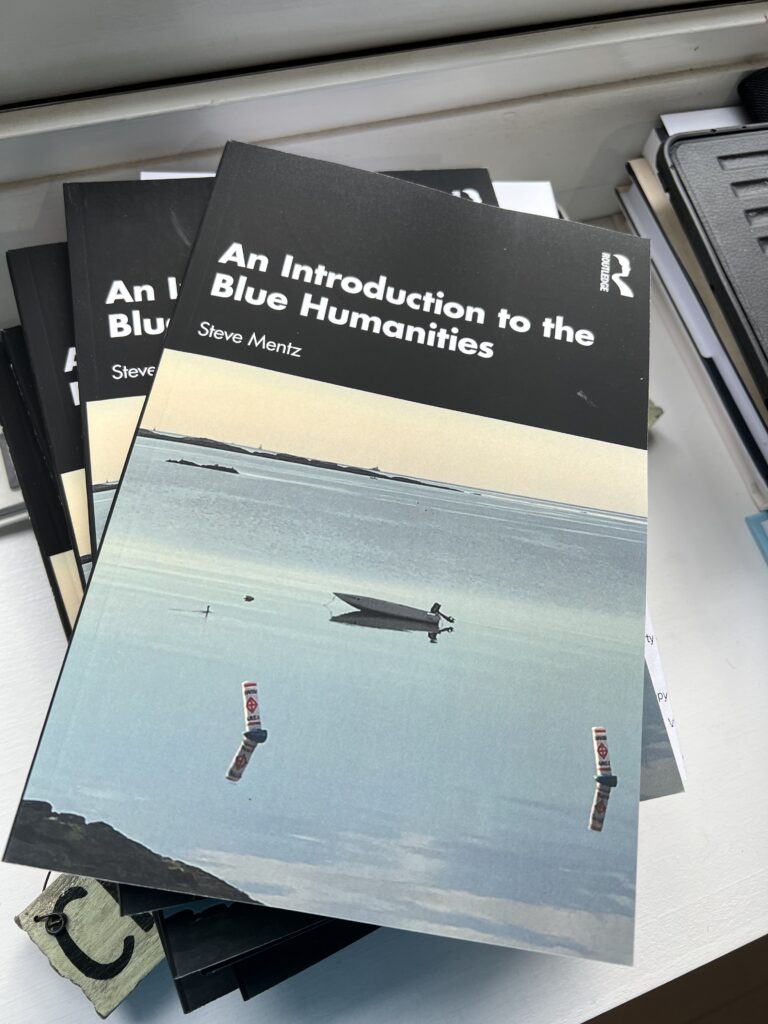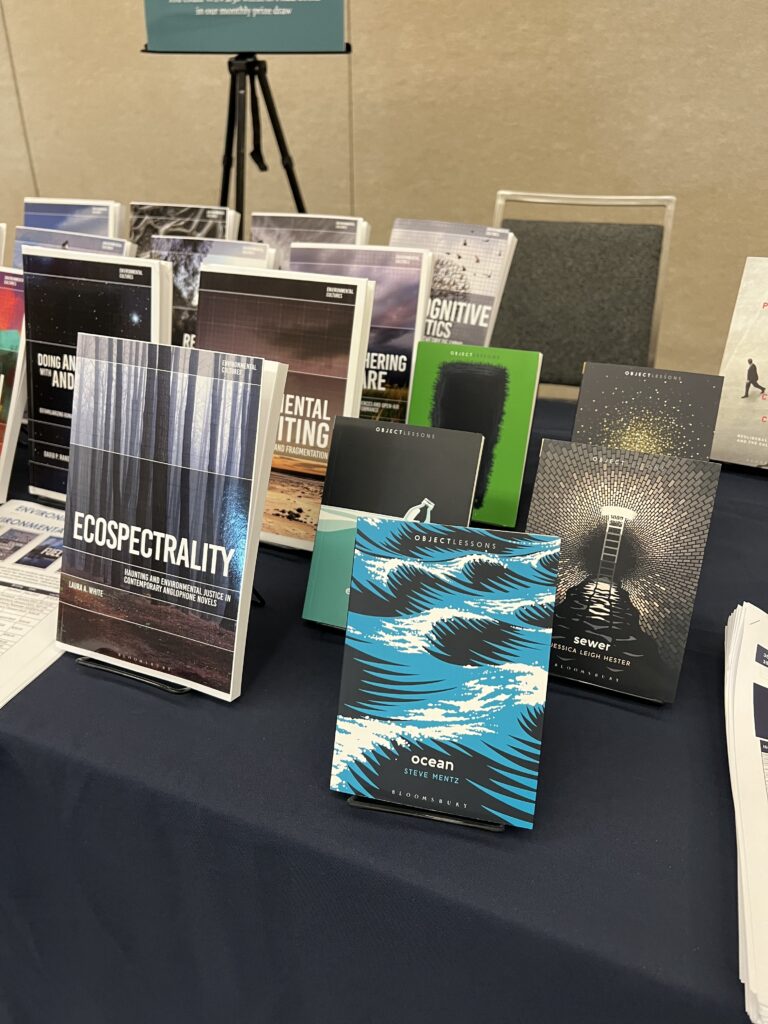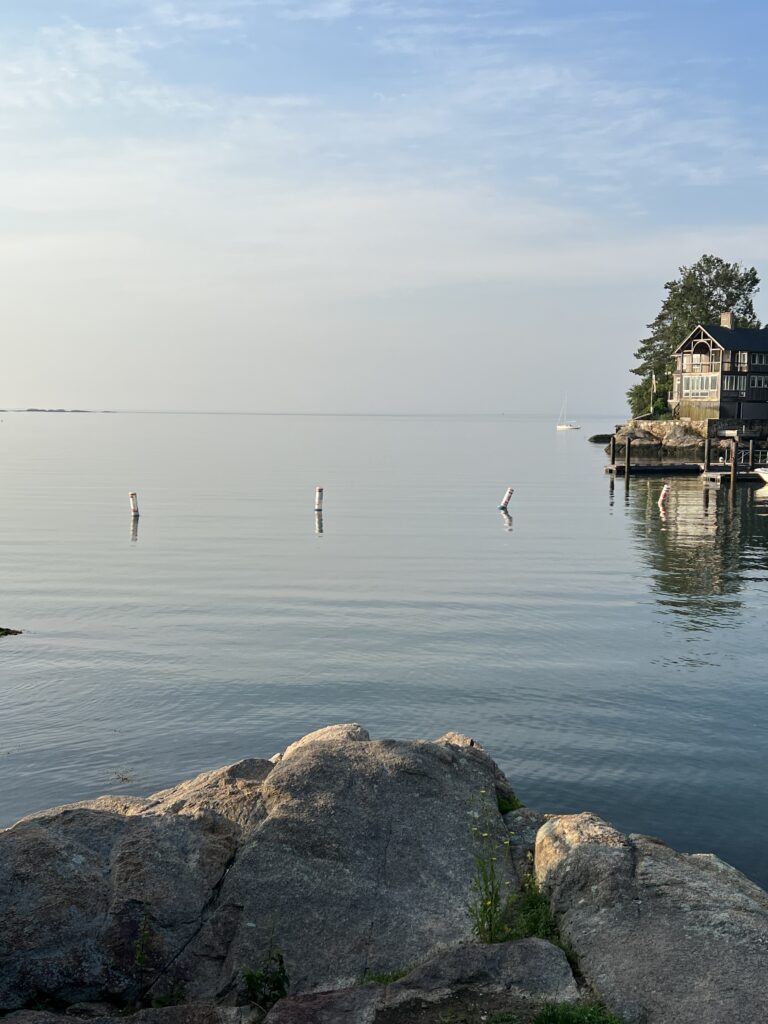The panels and conversations were still swirling near the confluence of the Columbia and Willamette rivers on Wednesday, but I snuck out early to squeeze myself into in a big metal tube bound for Connecticut. Shall I confess that I like leaving conferences just a bit early? I love ASLE, and I greatly value the press of ideas and faces, the dynamism of familiar and new people. Though I don’t close down the hotel bar anymore, I hurl myself into the maelstrom eagerly each time. But also – especially in summer – Short Beach calls me home.

This year’s ASLE circled around ideas of the commons, as an environmental, intellectual, and human prospect. At many sessions, I was struck by how capaciously that frame allowed many different kinds of academic and public work to shelter beneath its big tent. I heard many watery and oceanic papers – those were the discursive currents I followed – and also great work about Thanos, the super-antihero of Malthusian ecoscarcity, a brilliant analysis of eco-fascism as CREEP-ing tide and danger to left as well as right politics, and a series of wonderfully generous public humanities projects. I caught up with many friends, including some from my time at the RCC in Munich last fall, as well as an old buddy who lit out from NYC to parts West several decades ago & who took me for a pre-conference swim in the Willamette.
Some particular things stick in my over-stimulated 30,000 foot mind. The conference was the public debut of my book An Introduction to the Blue Humanities, the first copies of which arrived at my door day before the conference started. It’s always exciting to have something physical to show for one’s ideas, and I am grateful that the Scholar’s Choice table let me display the copy I brought, even though it hadn’t been arranged beforehand. My two traveling copies are going home with the excellent blue humanities scholar Serpil Opperman and with Ben Doyle, a Bloomsbury editor with whom I am conspiring future watery adventures. Publication always stirs up a social media flurry, for which I am grateful, but it’s also nice to have physical books to hand about, and to see people beyond Zoomtopia.
A few hours before Tuesday’s “Aquatic Commons” panel, which I helped organize, I was dazzled by an early-morning session featuring watery work by a quintet of early career scholars – Kevin Chow on what he evocatively calls “upended mastery” in maritime film, Anna Aldritch on the beach as interspecies commons in Albee’s Seascapes, George Hegarty on the idea of “drift” as a model for non-linear human-ocean engagement, and Alison Maas on “uncentering” the Pacific coastline in mid-20c California poetry. Plus a bonus recorded talk by Alison Glassie that I’ve not yet had time to hear! The session was lively, speculative, and generously collective in spirit. I’m so pleased to see so much great blue eco-thinking swelling up into the world!

My own panel opened with another example of great new work, with Bri Reddick’s reading of “Beasts of the Southern Wild” in the context of swamp and Black feminist eco-theory. Those muddy land- and water-scapes are wonderfully generative, and I’m sure I’ll be thinking about Bri’s talk when I write about swampy mixtures in Shakespeare’s Antony and Cleopatra for my next academic event, in London at the National Maritime Museum in September. I followed with a slightly disjointed extension of my thinking about swimming, which – I now realize – has been kind of a shadow partner (a “secret sharer,” somebody would say) of my scholarly work. “Swimmer poetics” has appeared in traditional venues – its debut may even have been in PMLA in 2012- but much of my swim-thinking has shown up in para-academic publications, in poems, or in public talks. What is the right venue and right form for this work? I’m not entirely sure – maybe it needs to stay close to water?
The second half of our panel featured Serpil Opperman, who has her own Blue Humanities book out this summer too, speaking movingly about fresh water and fate of a particular Turkish lake in the Anthropocene. The inspiring Greta Gaard brought the panel home with a generous queering of the blue humanities that opened many watery portals.
I was struck, in that full conference room on a gorgeous West coast summer afternoon, by the ASLE paradox that used to be (and maybe still is?) captured in the unofficial motto, “I’d rather be hiking.” (For me, probably swimming, but the idea is the same.) There is a simple, but still potent, irony in sitting inside in our conference clothes theorizing our contact with the nonhuman that’s just outside the doors. A doubled-body-ness haunts so much academic ecocriticism – I love our work and gatherings such as ALSE, but still…

How do we respond? It’s a familiar question for any politically-motivated school of academic analysis, and we blue humanities types aren’t experiencing anything that generations of feminists, Marxists, Critical Race Theorists, disability theorists, and many others have not been long grappling with.
My tendency is to think about conflicting imperatives and audiences through the lens of generic multiplicity. So many of the big “Humanity and Nature” stories slot themselves into generic alternatives, in which the abiding cultural authority of the tragic hero – old Man Anthropos, as I sometimes mockingly call him – takes up too much room. A hybridizer, and scholar of literary romances, at heart, I’m always looking for combinations that create new spaces. A few ideas recurred at this ASLE —
Outreach programs: Some of the most inspiring projects I learned about at the conference were collaborative and extra-academic – Eric Gidal taking student-artists to visit fourth generation Iowa farmers, Weston Twardowski’s description of how the Rice Environmental Humanities program networks eco-advocacy in Houston, Ella Mershon’s public theater program about the long history of coal around Newcastle, Brenda Coutinho’s description of a utopian college founded by (or in honor of?) Tagore in India.
These acts of what I might describe as remediative collaboration don’t always fit easily into the traditional outputs of a scholarly career, at least not in the US model that prioritizes individual academic scholarship. But surely we need to rethink scholarship in the face of what’s coming down the environmental highway?
Another form of collaboration appeared in the Salmon Commons Plenary, which I had been especially looking forward to. Photographer Carol Craig and Yakima tribal leader JoDe Goudy described First Nations Indigenous understandings of land as common resource in relation to the the mercantile corporatism of settler states. It made me think about the summer I spent, long ago in 1989, cleaning Exxon’s tar off Alaskan beaches in the company of local Athabascan Natives and temporarily out-of-work commercial fishermen. I’m long out of touch with both groups, but I wish I wasn’t!
I wasn’t able to hear very much of the joint plenary featuring Elizabeth DeLoughrey and Alejandro Frid, but their slides promised an invocation of “two-eyed seeing,” a guiding principle developed by Mi’kmaw Elder Albert Marshall as a way to integrate Indigenous and modern perspectives. I don’t know very much about this concept, though it sounds intriguing. So many new things to learn about! I look forward to ASLE’s next ride!